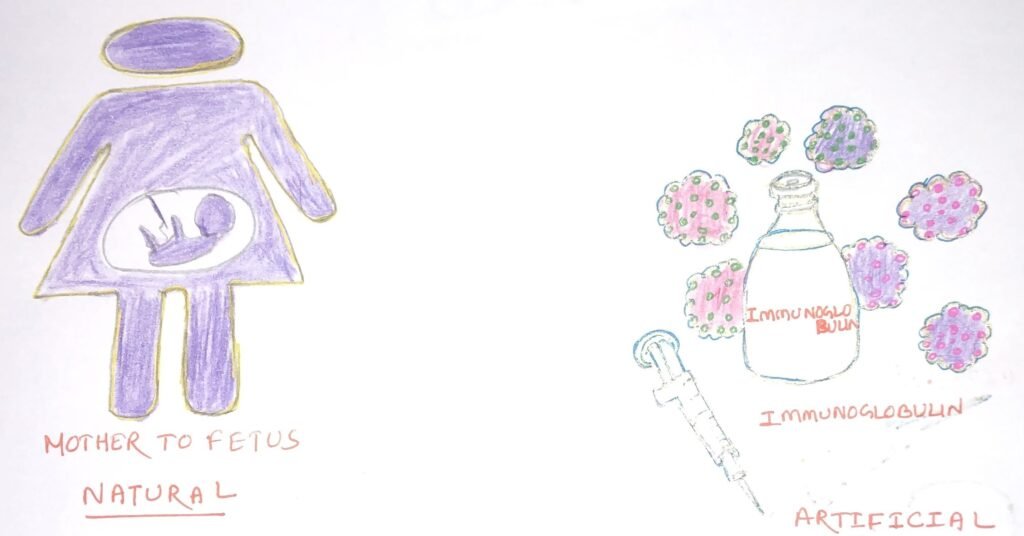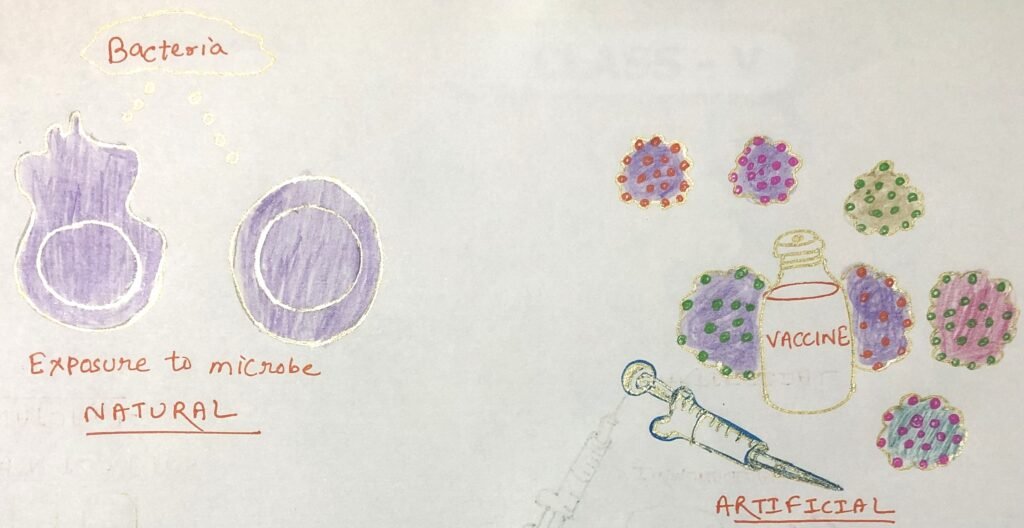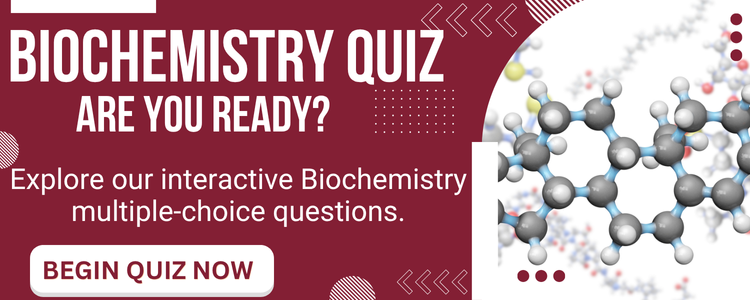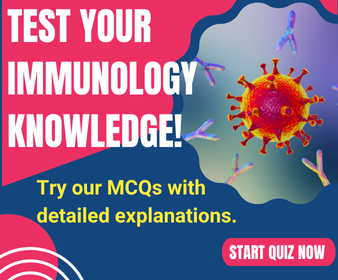In this article, I briefly describe how passive and active immunization protects against diseases.
Immunization
The process of evoking a state of protective immunity against a harmful pathogen is called immunization. When exposed to a live pathogen and recovered, an individual is immunized with the disease. Though this is an effective way to get protective immunity, it is also dangerous. When modified forms of pathogen that do not cause disease are deliberately exposed to individuals, the process is called vaccination. Both of these methods help to generate memory cells. However, vaccination does not always ensure immunity.
Passive immunization
Immunity elicited in one animal when transferred to another is called passive immunity. Emil von Behring and Kitasato Shibasaburo first contributed to passive immunity. It can be natural, e.g., the transfer of antibodies from mother to fetus or injecting serum from one animal to another (figure 1). Maternal antibodies to diseases like diphtheria, tetanus, streptococci, measles, mumps, and poliovirus, provide acquired protection to the fetus. IgA antibodies present in the mother’s breast milk also provide passive immunity to the infant.

The other way in which passive immunization can be achieved is by injecting a recipient with preformed antibodies, also called antiserum. These preformed antibodies or antiserum are collected from other immune individuals. Passive immunization was the only option for fatal diseases before the advent of vaccines and antibiotics. Nowadays, some conditions need treatment through passive immunization.
Some conditions need passive immunization
Congenital immune deficiency associated with babies since birth is treated with passive immunization. This deficiency causes the children to experience acute respiratory failure by the respiratory syncytial virus (RSV). Passive immunity is utilized for unvaccinated individuals who are exposed to pathogens responsible for diseases such as botulism, tetanus, diphtheria, hepatitis, measles, and rabies.
It is also used to safeguard travelers and healthcare workers who may encounter pathogens without having protective immunity. Additionally, antiserum acts as an antidote to neutralize venom from certain snake or insect bites. Importantly, passive immunization does not stimulate the body’s natural immune response. Instead, it provides temporary protection by acting as a barrier between the host and the pathogen or toxin, without generating any long-term immune memory.
Risks associated with passive immunization
There are certain risks associated with passive immunization. The risks are linked with the injection of preformed antibodies. The antibody produced in another species, such as a horse is known as an anti-isotypic antibody. When the recipient receives this antibody, there is a high chance that the recipient may mount a strong response to the isotypic determinants of the foreign antibody. The recipient can also mount a strong response to the parts of the antibody (constant region domains) that are unique to the horse species.
This response can cause severe complications. Some recipients produce IgE antibodies against horse-specific determinants. High levels of these IgE-horse antibody immune complexes can lead to systemic anaphylaxis. Some individuals produce IgG or IgM antibodies specific to the horse antibody. This results in complement-activating immune complexes. The complexes get deposited in tissues, which leads to type II hypersensitivity reactions. The use of purified human antiserum instead of horse antiserum in individuals results in the same symptoms with much less intensity.
Active immunization
When adaptive immunity is triggered, it elicits protective immunity and long-lived immunologic memory. Active immunization leads to a secondary immune response on subsequent exposure to the same antigen. Thus, it results in the elimination of pathogens and the prevention of the disease. Active immunization can be obtained through natural exposure to the infectious agent or a similar agent (figure 2). If an individual is exposed to a cowpox pathogen, then it can be protected from smallpox. This type of immunization is also achieved artificially through the administration of a vaccine (figure 2).

The immune system plays an active role in active immunity as it induces the proliferation of antigen-reactive T and B cells. As a result of which protective memory cells are formed. Vaccination primarily aims for the formation of protective memory cells. Vaccination programs are being carried out throughout the world, and play an important role in bringing down the death rate. Children need repeated vaccinations at successive time intervals to gain protection against common harmful pathogens.
Infants’ vaccination starts after a few months of birth
In the first few months after birth, infants get protection from circulating maternal antibodies. Some vaccines like DTaP, are given after clearance of all maternal antibodies from an infant’s circulation. If the DTaP vaccine is given early to an infant, then passively acquired maternal antibodies can bind to epitopes on the DTaP vaccine and block sufficient activation of the immune system.
Maternal antibodies are also known to interfere with the efficacy of the measles vaccine. Thus, the MMR vaccine (measles, mumps, rubella) is not given to infants before they attend one year. In some developing countries, the measles vaccine is administered at 9 months of age as 30-50% of children in these countries contract the disease before 15 months of age. Multiple immunizations with the polio vaccine are needed for children. This is to ensure an adequate immune response is generated to each of the strains of poliovirus that make up the vaccine.
Risks of vaccination
Vaccination programs worldwide create awareness among people by successfully decreasing the rates of some diseases. In young children, the incidence of these diseases typically remains low. However, side effects of some vaccines tend to reduce the vaccination rate, which leads to the re-emergence of the disease. An example of which is side effects from the original pertussis attenuated bacterial vaccine included seizures, encephalitis, brain damage, and even death. Each vaccine comes with its own set of specific reactions. Some side effects are not harmful as after getting the DPT vaccine, some might experience mild throat soreness, a low-grade fever, and a little cough. In most cases, these symptoms are not a cause of concern for the candidate.
Everyone should remember that vaccination is not completely effective. With any vaccine program, a certain percentage of recipients may not respond and thus remain susceptible. Some individuals are unfit for vaccination due to some health issues. This may not be a problem, if the majority of the population are vaccinated and thus immune to an infectious agent. This is termed as herd immunity.
Conclusion
Immunity elicited in one animal when transferred to another is called passive immunity. It can be natural, e.g., the transfer of antibodies from mother to fetus or injecting serum taken from one animal to another. There are certain risks associated with passive immunization. The risks are linked with the injection of preformed antibodies.
Active immunization leads to a secondary immune response on subsequent exposure to the same antigen. Thus, it results in the elimination of pathogens and prevention of the disease. Active immunization can be obtained through natural exposure to the infectious agent or a similar agent. This type of immunization is also achieved artificially through the administration of a vaccine. The immune system plays an active role in active immunity as it induces the proliferation of antigen-reactive T and B cells. As a result of which protective memory cells are formed.
It should be remembered that vaccination is not completely effective. With any vaccine program, a certain percentage of recipients may not respond and thus remain susceptible. Some individuals are unfit for vaccination due to some health issues.
You may also like:
- The generation of memory cells and formation of long-lived plasma cells
- Live attenuated and inactivated vaccines
- Subunit vaccines– vaccines from purified macromolecules

I, Swagatika Sahu (author of this website), have done my master’s in Biotechnology. I have around fourteen years of experience in writing and believe that writing is a great way to share knowledge. I hope the articles on the website will help users in enhancing their intellect in Biotechnology.



